At home with artist Joana Vasconcelos
Even in a period of social distancing, the art world continues to turn. In our ongoing series, we go home, from home, with artists finding inspiration in isolation. We sat down (via Zoom) with the Lisbon-based artist to discuss David Bowie, the perils of wearing corsets and her much-anticipated Wedding Cake installation for Waddesdon Manor
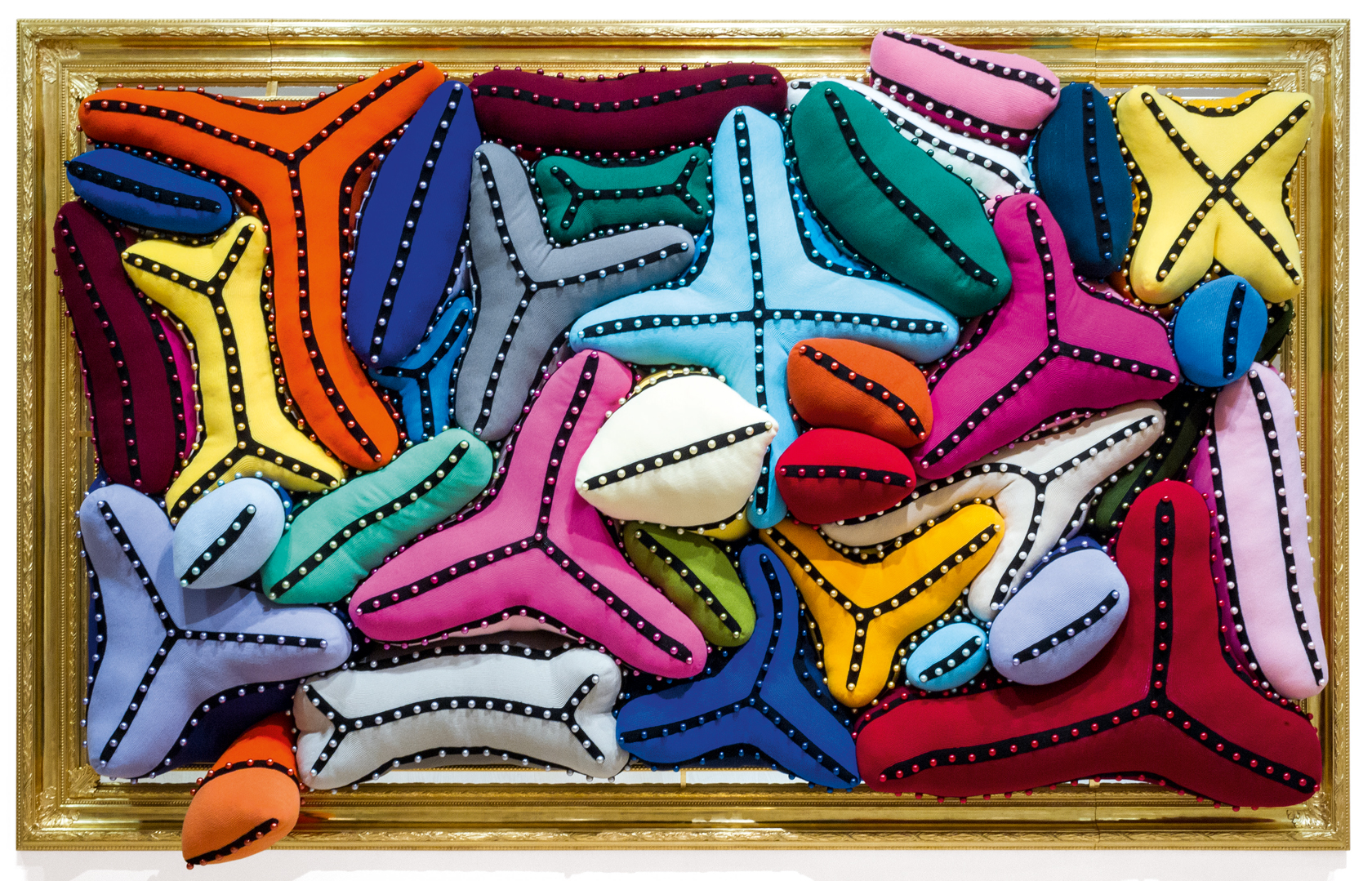
The career of Portuguese artist Joana Vasconcelos has seen a lot of firsts. In 2012, she became the first woman and youngest artist to exhibit at the Palace of Versailles. The following year, her (floating) pavilion at the Venice Biennale was the first to be curated by women. Later this year, she will become the first artist to install a 12-metre high, interactive wedding cake in the grounds of Waddesdon Manor. Vasconcelos’ often-flamboyant, puzzling work – which has turned tampons into a chandelier and saucepans into stilettos – applies new value to everyday consumables, new perspectives on femininity and new meaning to the term trompe-l'œil.
Here, we found her at home in Lisbon where she’s crocheting, hopping from Zoom to Zoom, and continuing to beaver away on her ‘impossible project’ for Waddesdon.
Wallpaper*: Where are you as we speak?
Joana Vasconcelos: I am in my house in Lisbon, in front of where the Atlantic meets the river Tagus. I have a beautiful house with a garden and swimming pool. I am very thankful to have bought this house many years ago because now I can see why I did it; it was for a purpose. I never saw much of this view before because I was always in the studio. Many things have stopped and we don't know if they’re ever going back on, like shows that were disassembled or postponed so it’s an uncertain time. But we are at home in good health. Everything keeps on going in a different direction, we don't know where, but it keeps on going.
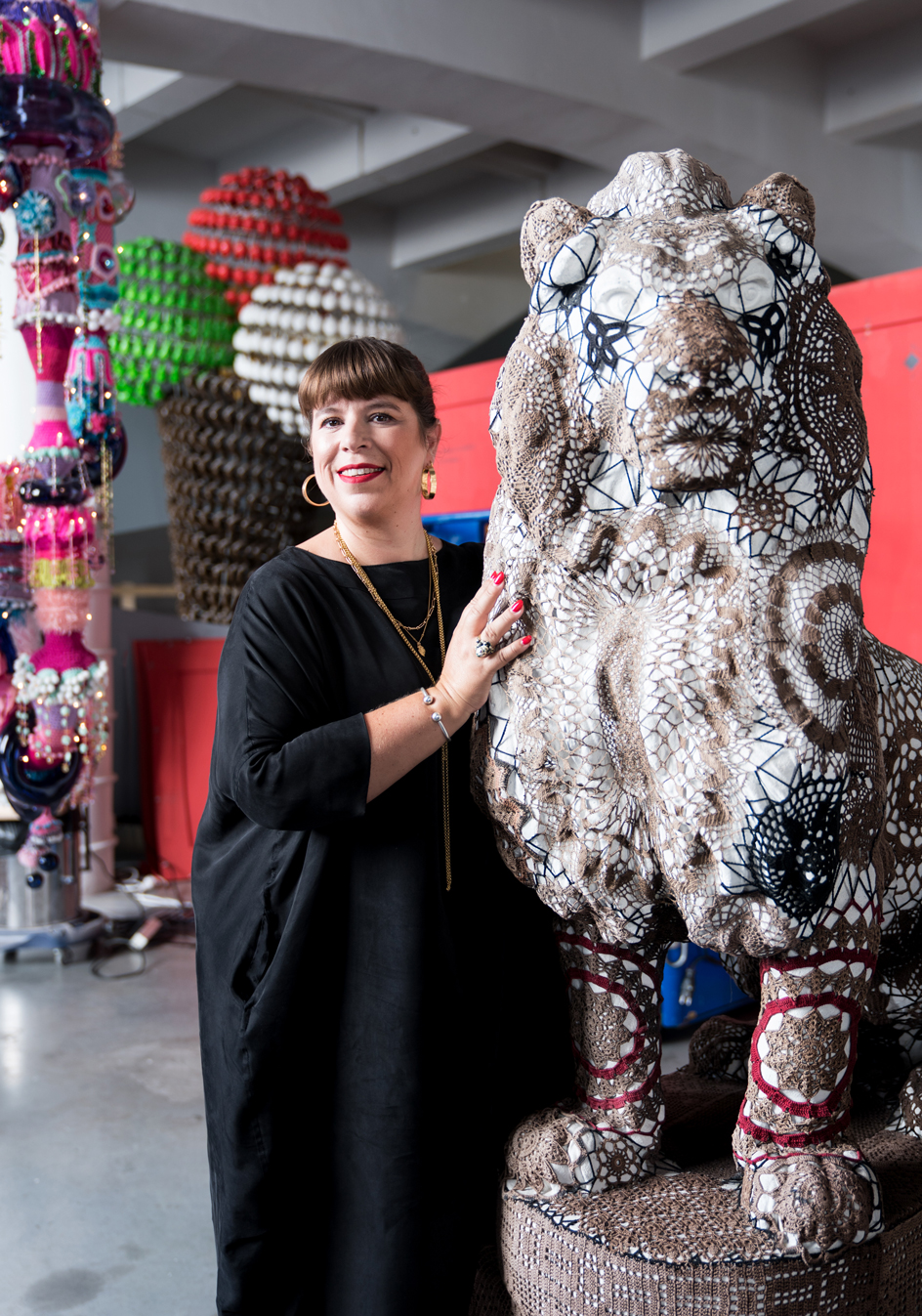
Portrait of Joana Vasconcelo
W*: Looking back, how do you feel your work has evolved in the last 20 years?
JV: It’s a big question. I can see that some of my early works were already part of who I am as an artist. Most of the pieces I did in the early years, if I hadn’t done them then, I would do them now. I don't see my evolution as a line; I see it as the need to do certain projects, so it’s not very coherent or historical. Sometimes I go back and pick up on the same ideas and do them differently. What I’m doing today isn’t better than what I did before. Now I have much more money, a better team and studio and more awareness of what I can and cannot do, but having more doesn't mean projects will be better. The world has evolved and I have different concerns than I had before.
W*: Which artists have had the biggest impact on you?
JV: I am influenced by any artist that transforms my way of looking at the world. It doesn't matter if you like it or not, it’s how it affects you and how it will rock your world. That’s what artists do, they give you a perspective, by writing a book, singing a song, by dancing, they create a window so others can look at the world from a different angle. I really like Louise Bourgeois, yes, but then I also like someone that I’d never heard of in Mexico. David Bowie changed my world, but not all music by David Bowie. If I could send a piece of music to the moon it would be Heroes. David was quite right; you can be a hero, even if it’s just for one day.

A Noiva (The Bride). Chandelier made from 14,000 wrapped tampons. courtesy Atelier Joana Vasconcelos
W*: Which career moment will you never forget?
JV: I am thankful that life has already given me a few unforgettable moments. I will always think of when I did the first Venice Biennale ever curated by women. I was very young and didn't really know what I was doing. I knew it was important, but I never realised how important. The exhibition at the Palace of Versailles (2012) was amazing too. For the opening, I decided to wear a corset like Marie Antoinette, designed by my friend and a French corsetière. A few months before the exhibition, they said you have to try the corset on. I was like ‘no I have to work on the project.’ On the night, I put it on and thought, ‘oh my god, how am I going to handle this thing for the whole evening?’ I was so pressed! I couldn’t even think. I remember walking through the palace and sitting at the dinner table next to Manuel Valls thinking ‘why in the world am I trying to connect with Marie Antoinette?’ But I wanted to pay homage to these women who wore corsets their whole life – they had a tough time.
RELATED STORY
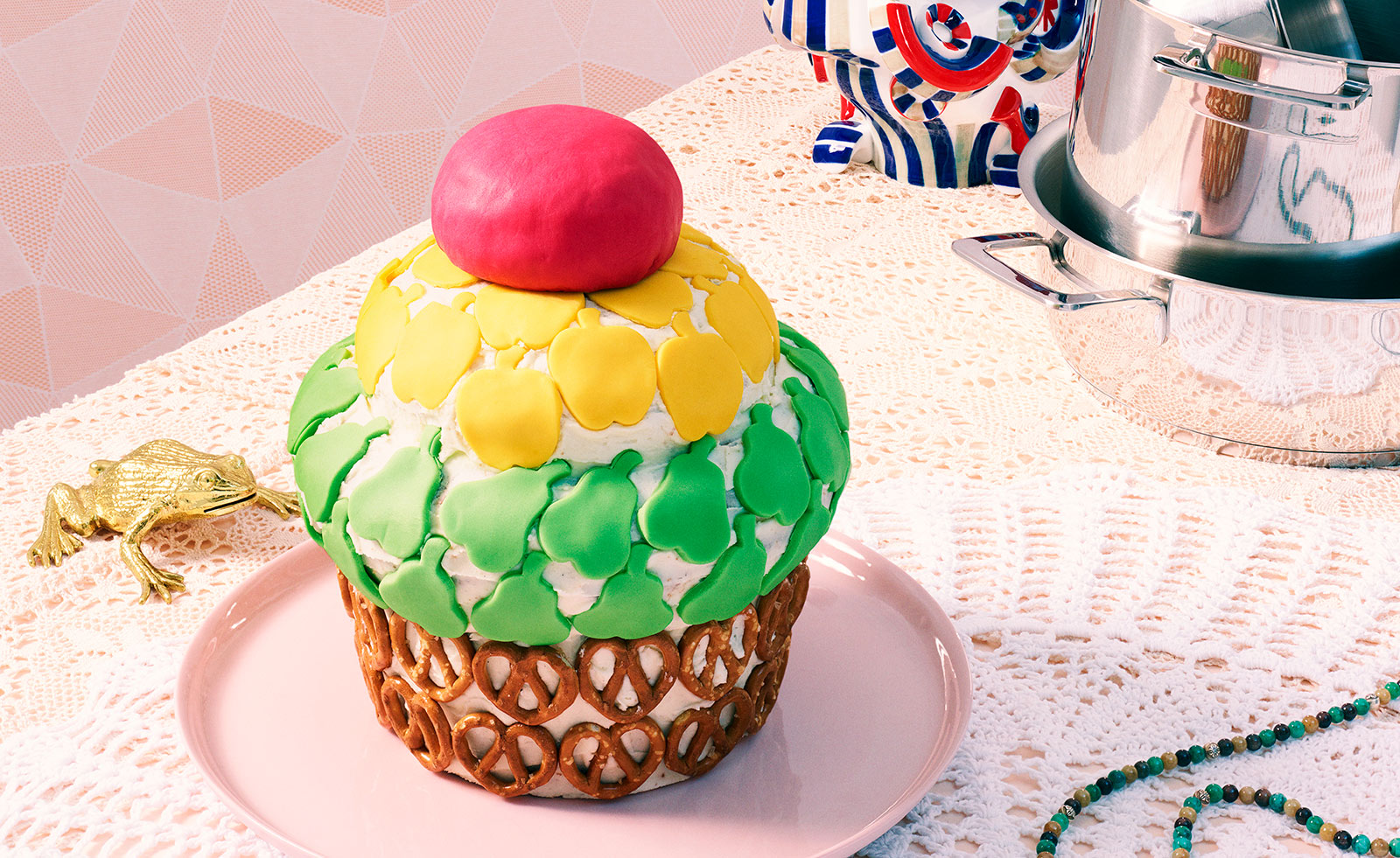
W*: How does your work engage with familiar, everyday objects?
JV: For me, the domestic environment is what surrounds me and is a very good source of inspiration, everything from a pot to a tampon. It’s not the object itself or where it comes from, it’s what you do with it and how you can talk about the world through it. It’s giving new contexts to things. For example, when tampons become a chandelier, you have a new object.

An initial sketch of Wedding Cake, a 12-metre high sculpture due to be installed at Waddesdon Manor later this autumn. Courtesy Atelier Joana Vasconcelos
W*: Can you talk a little about your forthcoming Wedding Cake installation at Waddesdon Manor?
JV: You can only do a great project when you find the right place: a museum, a location or a client. In this case, I found someone extraordinary, Jacob Rothschild, who commissioned this piece. It’s the most difficult thing I’ve ever done; I’ve never put so much of what I’ve learnt into one piece. Many artists have the ‘impossible project’ – I have a few and this is one. We’ve been working on it since 2017 and with this situation, we don't know what’s going to happen. It’s still not done, but we keep working on it every day. It has four tiers, ceramic on the outside, textiles on the inside and each level is a different colour. The idea is when you get to this monumental cake; you reach some stairs and go up in a spiral until you become the two little figures on the top. You will meet someone at the top and it could be someone you don't know and you could possibly marry them! It’s a piece that will allow people to not only experience the idea of marriage but actually get married in the piece.
Receive our daily digest of inspiration, escapism and design stories from around the world direct to your inbox.
W*: How are you adapting your way of working to the social distancing measures?
JV: I do yoga on Zoom. I do meditation on Zoom. I discuss the Wedding Cake project on Zoom. We do parties on Zoom. Every Thursday we do crochet on Zoom. It’s a different time, but I’m adapting the best I can. It’s interesting because people get together for different reasons than they did before. They have more time and they appreciate things in different ways.
W*: During the isolation period, have you developed any new interests?
JV: I taught my daughter (she’s eight) how to ride a bicycle. So now we all go on family bicycle rides. I’ve always lived in this neighbourhood, but now I’ve been through streets that I hadn’t walked in 20 years. I’m reconnecting with my neighbourhood, which is quite cool!
A post shared by Atelier Joana Vasconcelos (@joanavasconcelosatelier)
A photo posted by on
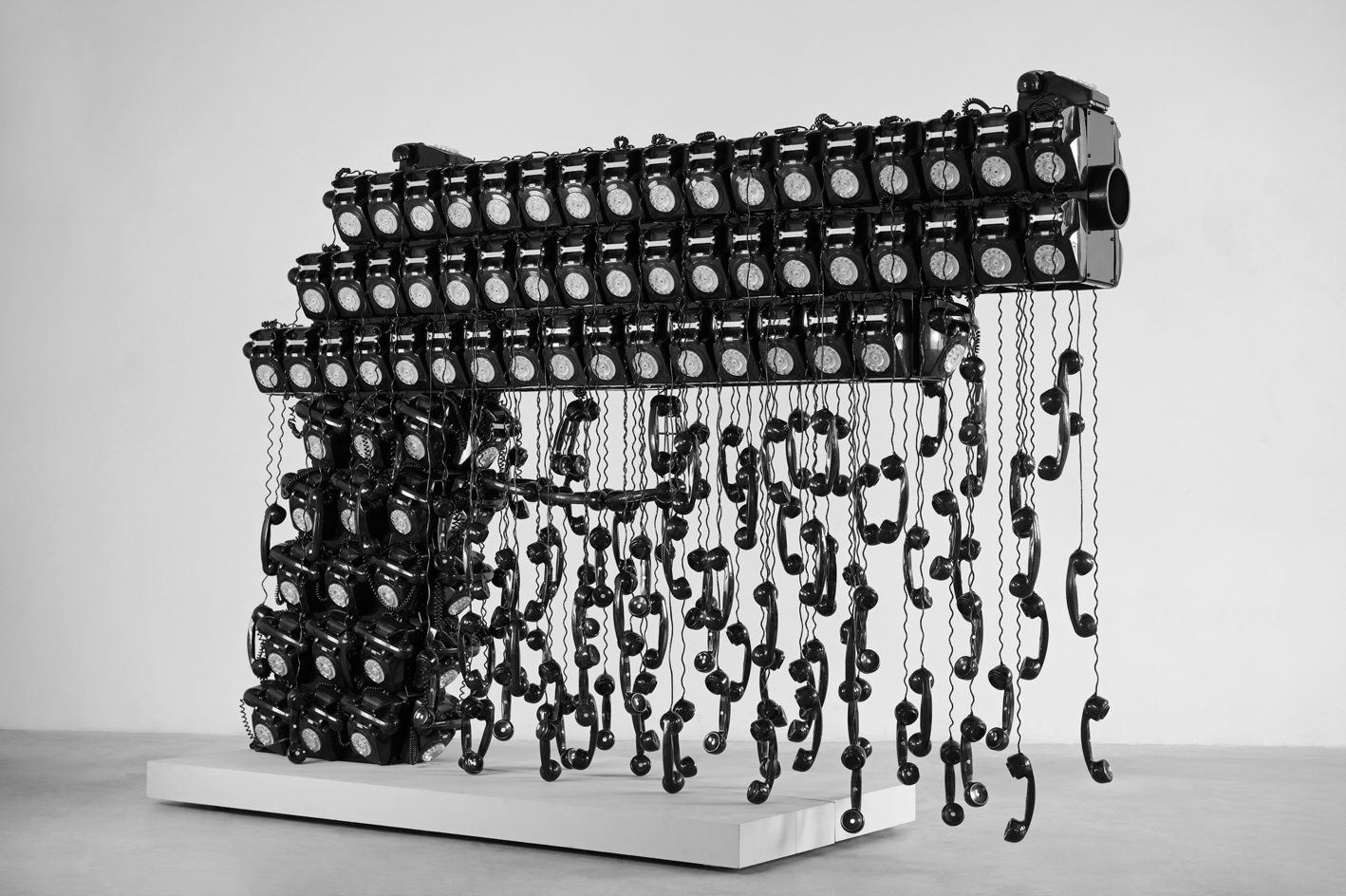
Call Center, courtesy Atelier Joana Vasconcelos

Marilyn, courtesy Atelier Joana Vasconcelos
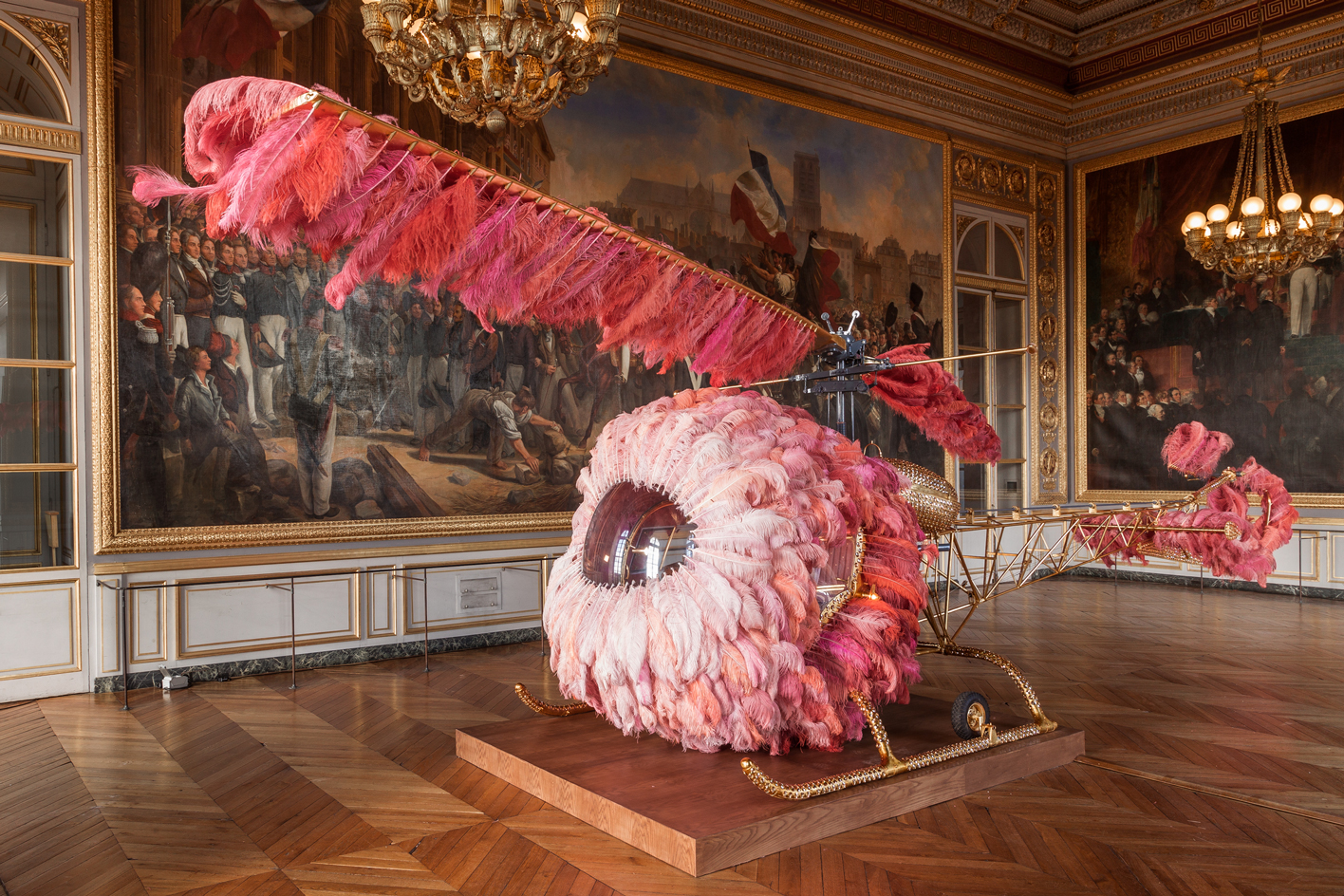
Lilicoptère, installation view at Palace of Versailles, courtesy Atelier Joana Vasconcelos
INFORMATION
Harriet Lloyd-Smith was the Arts Editor of Wallpaper*, responsible for the art pages across digital and print, including profiles, exhibition reviews, and contemporary art collaborations. She started at Wallpaper* in 2017 and has written for leading contemporary art publications, auction houses and arts charities, and lectured on review writing and art journalism. When she’s not writing about art, she’s making her own.
-
 Europe’s auto industry regroups at the Brussels Motor Show: what’s new and notable for 2026
Europe’s auto industry regroups at the Brussels Motor Show: what’s new and notable for 20262026’s 102nd Brussels Motor Show played host to a number of new cars and concepts, catapulting this lesser-known expo into our sightlines
-
 Wallpaper* Best Use of Material 2026: Beit Bin Nouh, Saudi Arabia, by Shahira Fahmy
Wallpaper* Best Use of Material 2026: Beit Bin Nouh, Saudi Arabia, by Shahira FahmyBeit Bin Nouh by Shahira Fahmy is a captivating rebirth of a traditional mud brick home in AlUla, Saudi Arabia - which won it a place in our trio of Best Use of Material winners at the Wallpaper* Design Awards 2026
-
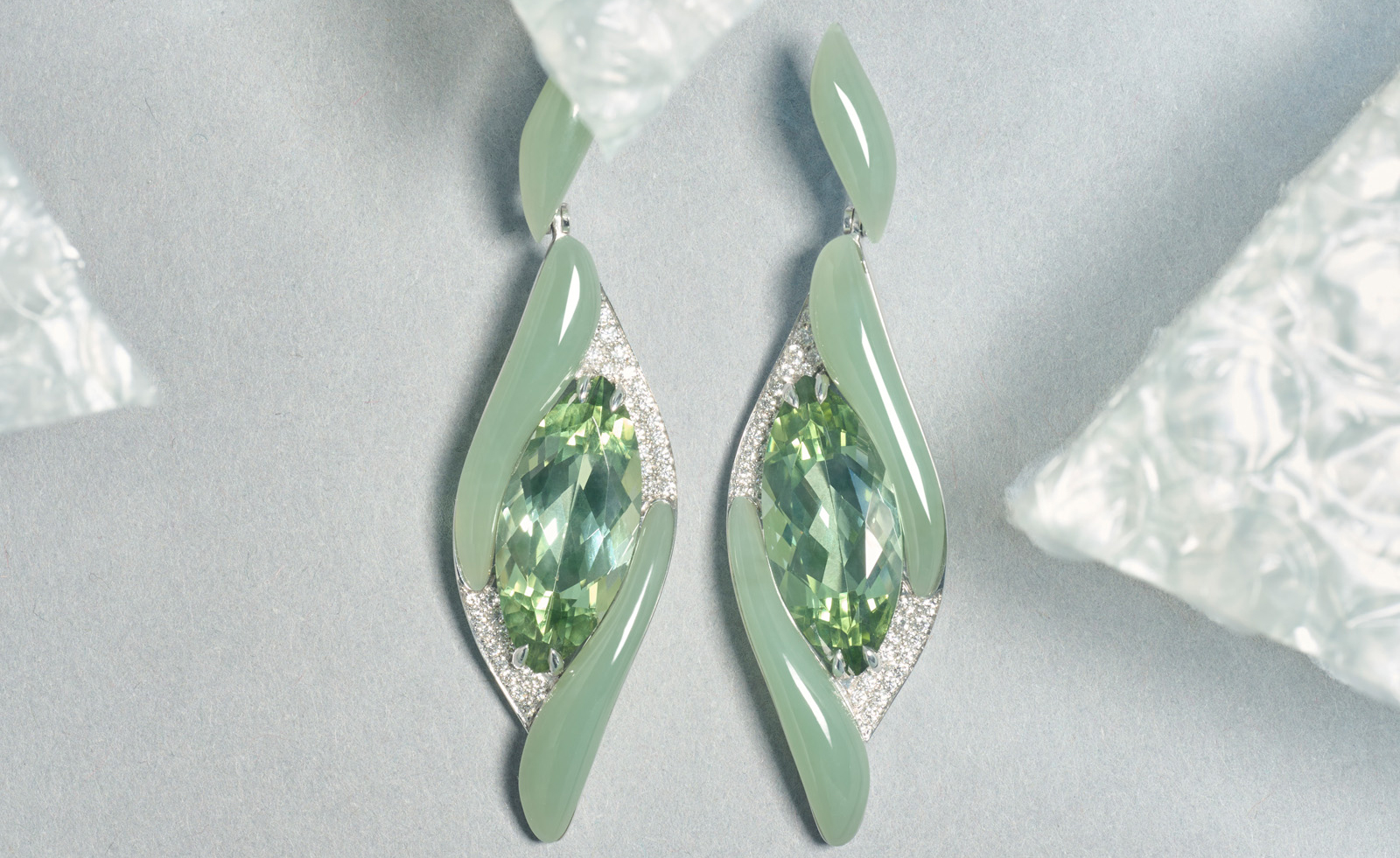 Wallpaper* Design Awards: Boghossian’s gem wizardry dazzles in high jewellery
Wallpaper* Design Awards: Boghossian’s gem wizardry dazzles in high jewelleryBoghossian's unique mix of craftsmanship and modern design is behind the edgy elegance of its jewellery – a worthy Wallpaper* Design Awards 2026 winner
-
 Rolf Sachs’ largest exhibition to date, ‘Be-rühren’, is a playful study of touch
Rolf Sachs’ largest exhibition to date, ‘Be-rühren’, is a playful study of touchA collection of over 150 of Rolf Sachs’ works speaks to his preoccupation with transforming everyday objects to create art that is sensory – both emotionally and physically
-
 Architect Erin Besler is reframing the American tradition of barn raising
Architect Erin Besler is reframing the American tradition of barn raisingAt Art Omi sculpture and architecture park, NY, Besler turns barn raising into an inclusive project that challenges conventional notions of architecture
-
 What is recycling good for, asks Mika Rottenberg at Hauser & Wirth Menorca
What is recycling good for, asks Mika Rottenberg at Hauser & Wirth MenorcaUS-based artist Mika Rottenberg rethinks the possibilities of rubbish in a colourful exhibition, spanning films, drawings and eerily anthropomorphic lamps
-
 San Francisco’s controversial monument, the Vaillancourt Fountain, could be facing demolition
San Francisco’s controversial monument, the Vaillancourt Fountain, could be facing demolitionThe brutalist fountain is conspicuously absent from renders showing a redeveloped Embarcadero Plaza and people are unhappy about it, including the structure’s 95-year-old designer
-
 See the fruits of Niki de Saint Phalle and Jean Tinguely's creative and romantic union at Hauser & Wirth Somerset
See the fruits of Niki de Saint Phalle and Jean Tinguely's creative and romantic union at Hauser & Wirth SomersetAn intimate exhibition at Hauser & Wirth Somerset explores three decades of a creative partnership
-
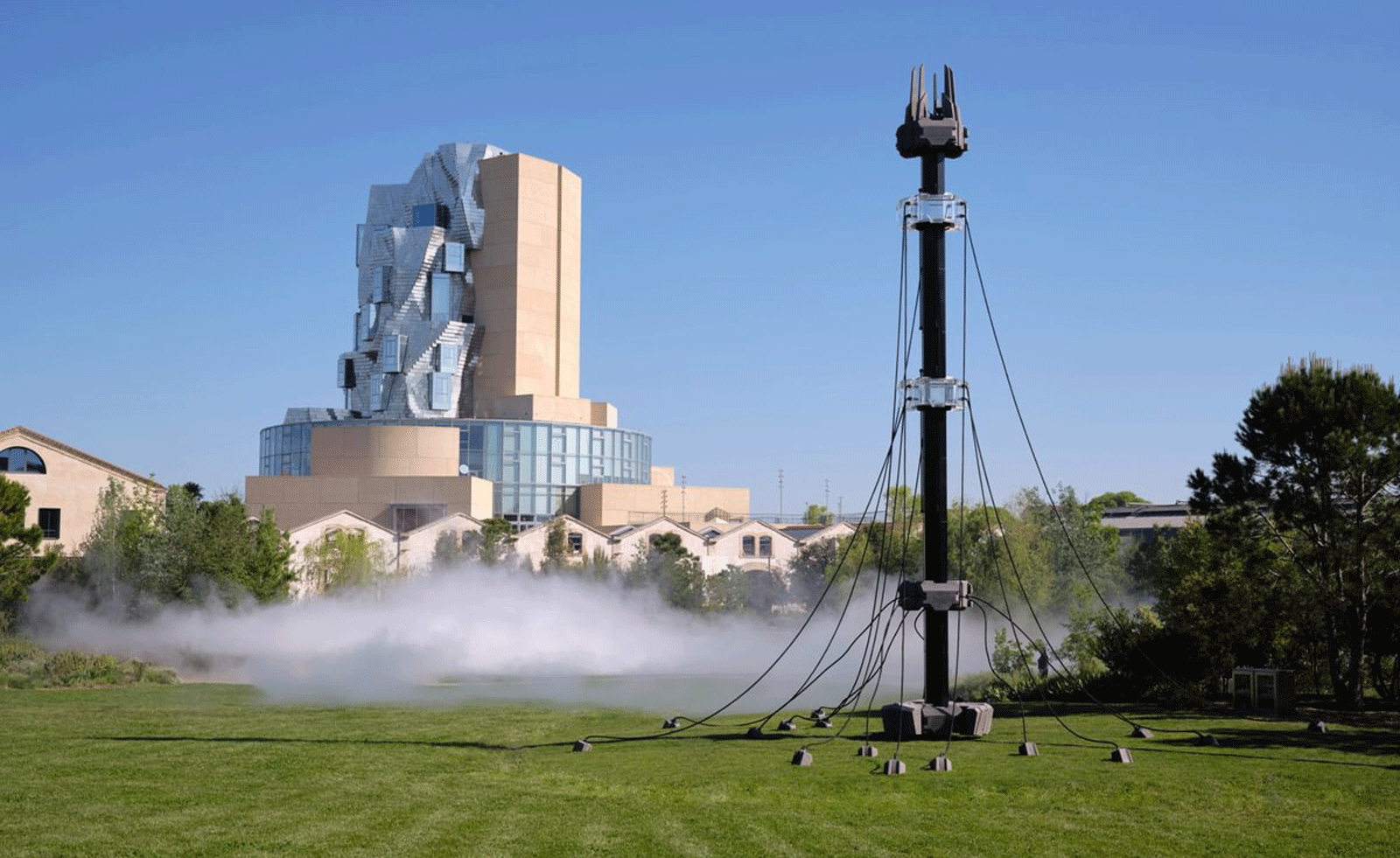 Technology, art and sculptures of fog: LUMA Arles kicks off the 2025/26 season
Technology, art and sculptures of fog: LUMA Arles kicks off the 2025/26 seasonThree different exhibitions at LUMA Arles, in France, delve into history in a celebration of all mediums; Amy Serafin went to explore
-
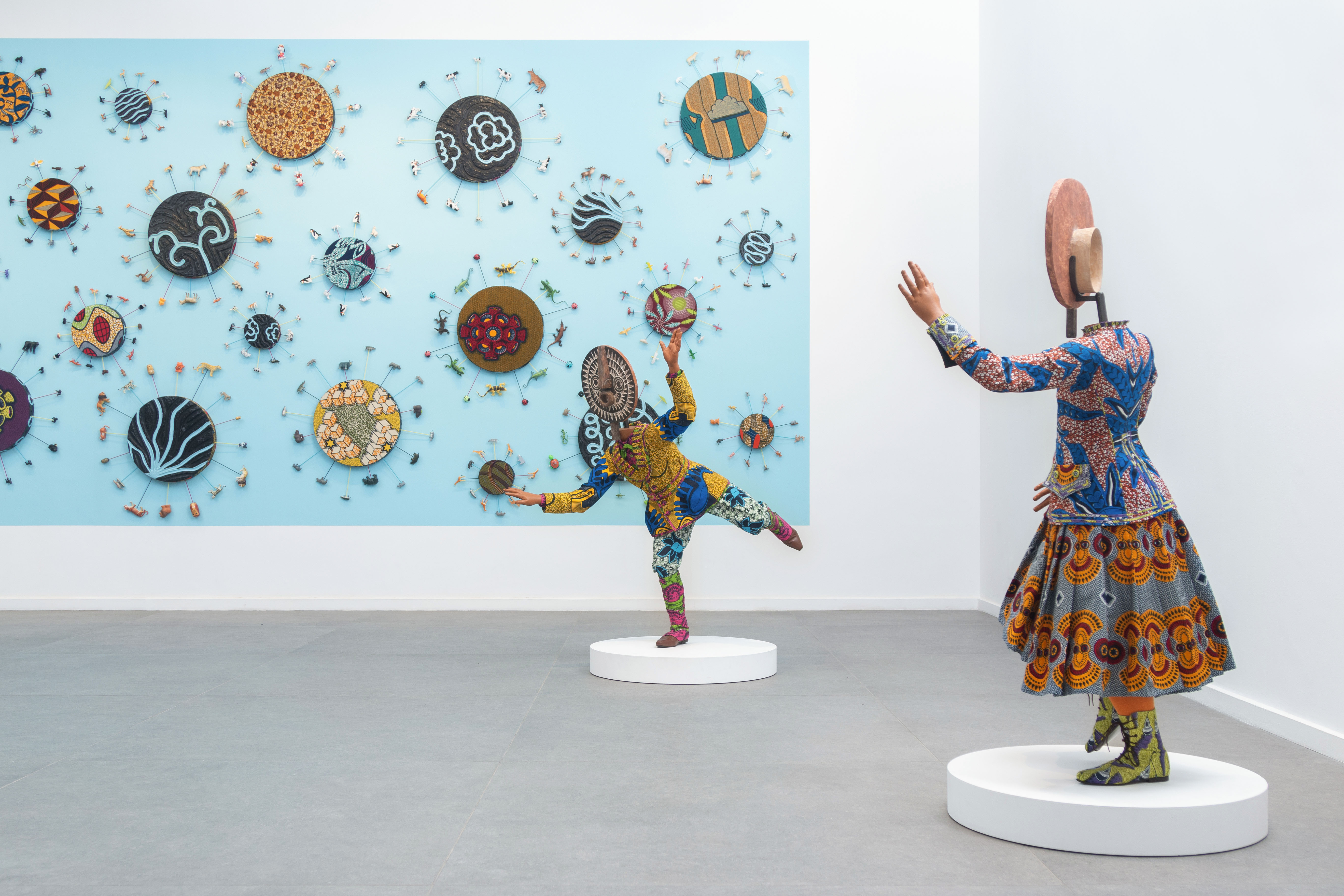 Inside Yinka Shonibare's first major show in Africa
Inside Yinka Shonibare's first major show in AfricaBritish-Nigerian artist Yinka Shonibare is showing 15 years of work, from quilts to sculptures, at Fondation H in Madagascar
-
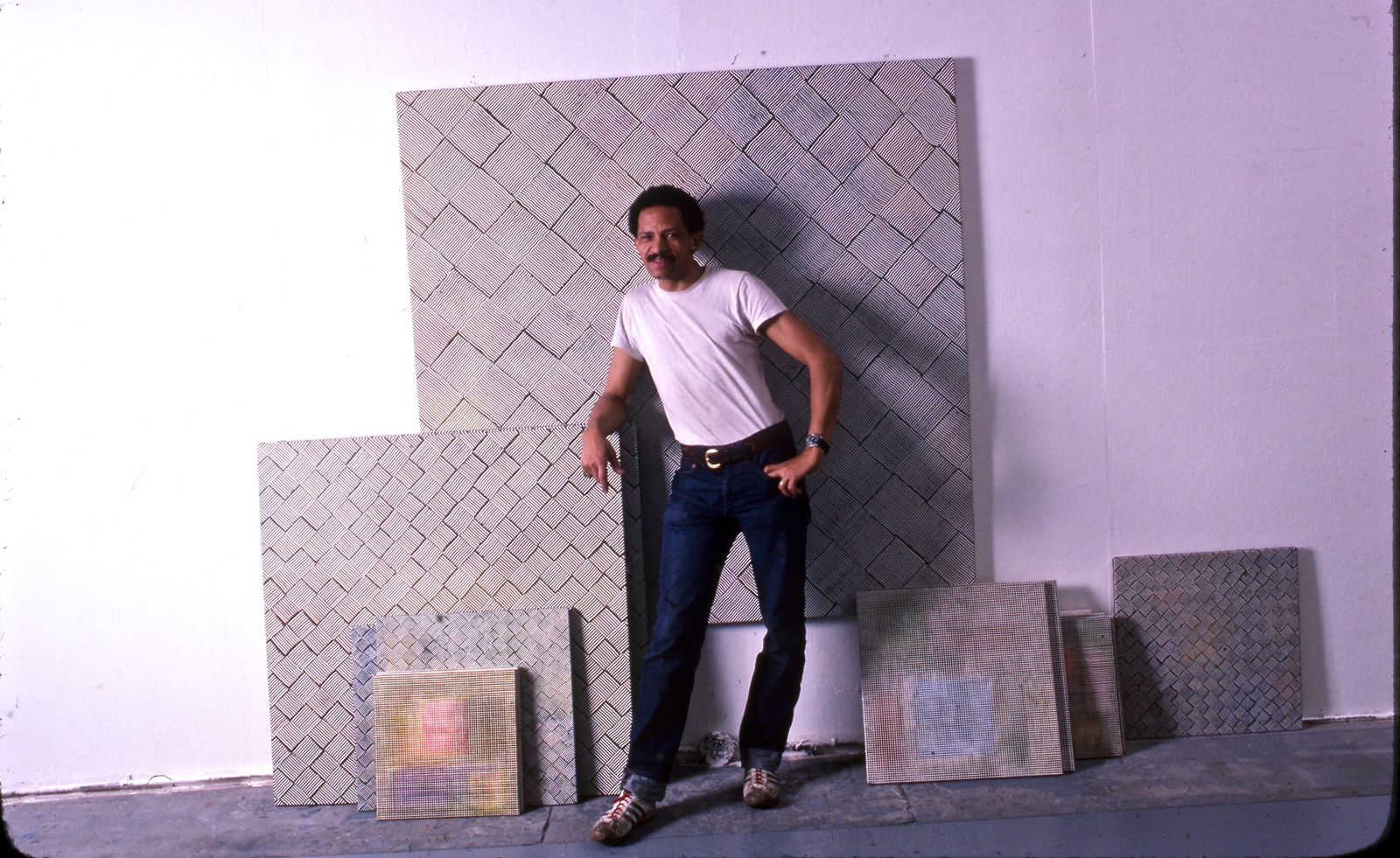 Inside Jack Whitten’s contribution to American contemporary art
Inside Jack Whitten’s contribution to American contemporary artAs Jack Whitten exhibition ‘Speedchaser’ opens at Hauser & Wirth, London, and before a major retrospective at MoMA opens next year, we explore the American artist's impact